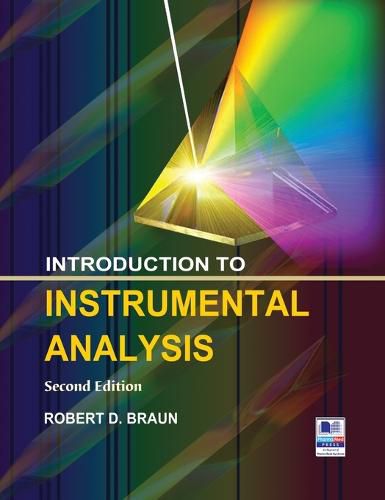Readings Newsletter
Become a Readings Member to make your shopping experience even easier.
Sign in or sign up for free!
You’re not far away from qualifying for FREE standard shipping within Australia
You’ve qualified for FREE standard shipping within Australia
The cart is loading…






This title is printed to order. This book may have been self-published. If so, we cannot guarantee the quality of the content. In the main most books will have gone through the editing process however some may not. We therefore suggest that you be aware of this before ordering this book. If in doubt check either the author or publisher’s details as we are unable to accept any returns unless they are faulty. Please contact us if you have any questions.
Introduction to Instrumental Analysis , second edition, contains 28 chapters and approximately 1100 pages which deal with an introduction to most aspects of electricity and electronics including computers and computer interfacing to analytical instruments, and all of the major categories of the instrumental methods of chemical analysis. The text has been updated from the first edition to include recent advances in instrumentation. The writing has been revised in order to make it more understandable to students and other readers.
The instrumental methods of analysis that are described in the text include all of the major absorptive and luminescent spectral methods, the atomic and ionic spectral methods including atomic absorption, atomic and ionic emission, and laser-enhanced ionization, chemiluminescence and electrochemiluminescence, photoacoustic spectroscopy, radiative scattering, refractometry, nuclear magnetic resonance, electron spin resonance, multiple x-ray methods, radiochemical methods, mass spectrometry, all of the major electroanalytical methods, all of the major chromatographic methods, thermal analysis, and automated laboratory analysis including the use of laboratory robots and control loops.
The appendixes include the answers to all of the problems, a listing of ASCII characters, abbreviations that are used in the text, and mathematical constants that are used in the text
$9.00 standard shipping within Australia
FREE standard shipping within Australia for orders over $100.00
Express & International shipping calculated at checkout
This title is printed to order. This book may have been self-published. If so, we cannot guarantee the quality of the content. In the main most books will have gone through the editing process however some may not. We therefore suggest that you be aware of this before ordering this book. If in doubt check either the author or publisher’s details as we are unable to accept any returns unless they are faulty. Please contact us if you have any questions.
Introduction to Instrumental Analysis , second edition, contains 28 chapters and approximately 1100 pages which deal with an introduction to most aspects of electricity and electronics including computers and computer interfacing to analytical instruments, and all of the major categories of the instrumental methods of chemical analysis. The text has been updated from the first edition to include recent advances in instrumentation. The writing has been revised in order to make it more understandable to students and other readers.
The instrumental methods of analysis that are described in the text include all of the major absorptive and luminescent spectral methods, the atomic and ionic spectral methods including atomic absorption, atomic and ionic emission, and laser-enhanced ionization, chemiluminescence and electrochemiluminescence, photoacoustic spectroscopy, radiative scattering, refractometry, nuclear magnetic resonance, electron spin resonance, multiple x-ray methods, radiochemical methods, mass spectrometry, all of the major electroanalytical methods, all of the major chromatographic methods, thermal analysis, and automated laboratory analysis including the use of laboratory robots and control loops.
The appendixes include the answers to all of the problems, a listing of ASCII characters, abbreviations that are used in the text, and mathematical constants that are used in the text